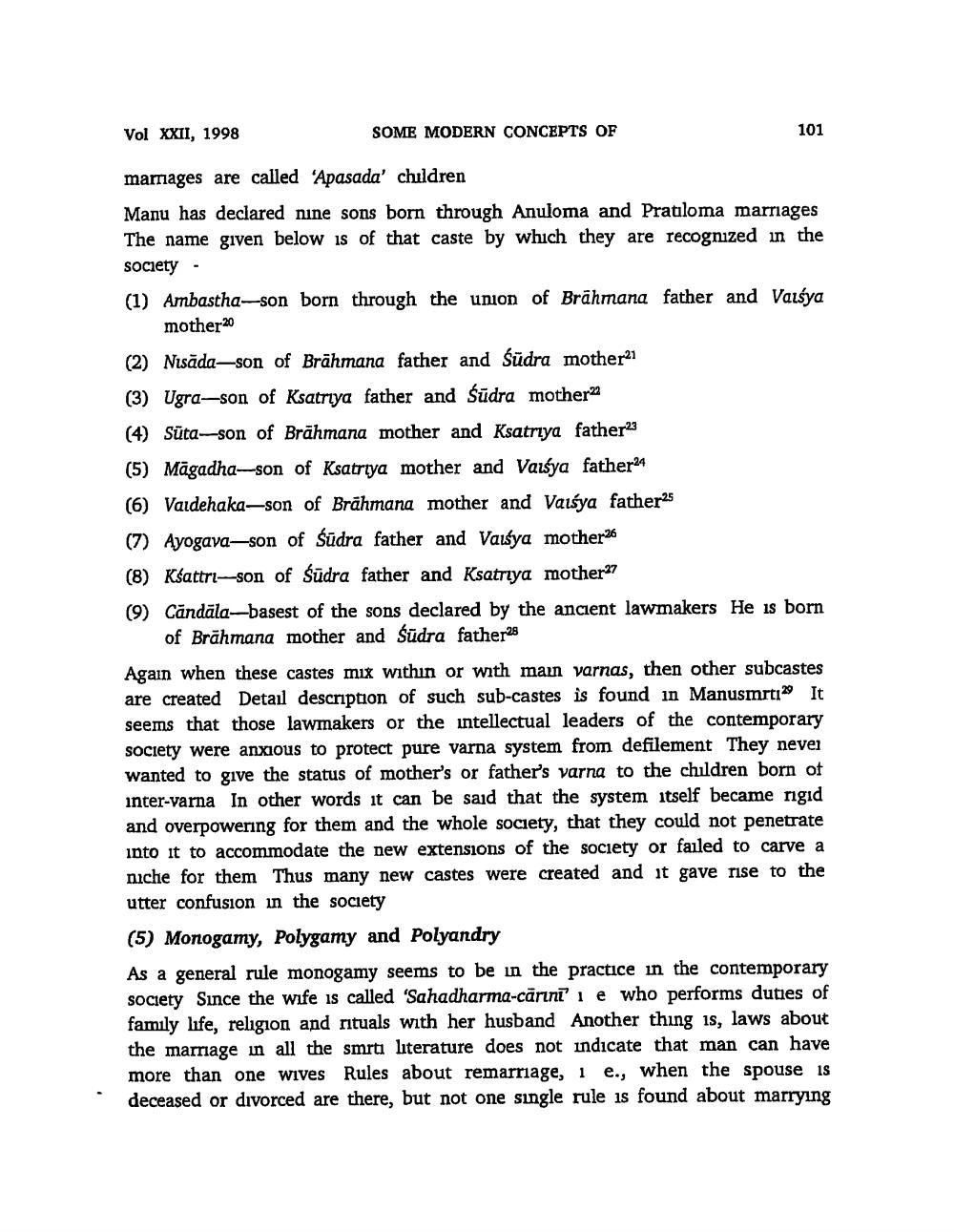________________
Vol XXII, 1998
SOME MODERN CONCEPTS OF
101
marriages are called 'Apasada' children Manu has declared nine sons born through Anuloma and Pratiloma marriages The name given below is of that caste by which they are recognized in the society - (1) Ambastha--son born through the union of Brāhmana father and Vaisya
mother20 (2) Nisāda—son of Brāhmana father and Śūdra mother21 (3) Ugra-son of Ksatriya father and Sūdra mother (4) Süta-son of Brāhmana mother and Ksatriya father23 (5) Māgadha-son of Ksatrtya mother and Vasya father24 (6) Vaidehaka-son of Brāhmana mother and Varsya father25 (7) Ayogava—son of Sūdra father and Vaisya mother26 (8) Kśattri--son of Śūdra father and Ksatriya mother27 (9) Căndāla-basest of the sons declared by the ancient lawmakers He is born
of Brāhmana mother and Śūdra father28 Again when these castes mix within or with main varnas, then other subcastes are created Detail description of such sub-castes is found in Manusmrtı29 It seems that those lawmakers or the intellectual leaders of the contemporary society were anxious to protect pure varna system from defilement They nevei wanted to give the status of mother's or father's varna to the children born of inter-varna In other words it can be said that the system itself became rigid and overpowering for them and the whole society, that they could not penetrate into it to accommodate the new extensions of the society or failed to carve a niche for them Thus many new castes were created and it gave rise to the utter confusion in the society (5) Monogamy, Polygamy and Polyandry As a general rule monogamy seems to be in the practice in the contemporary society Since the wife is called 'Sahadharma-cārini' ie who performs duties of family life, religion and rituals with her husband Another thing is, laws about the marriage in all the smrti literature does not indicate that man can have more than one wives Rules about remarriage, i e., when the spouse is deceased or divorced are there, but not one single rule is found about marrying




